Special edition travel blog: Springfield, Illinois!
Dear reader: usually this blog is dedicated to niche video game commentary, technical notes-to-self, and/or other assorted nonsense, but we break from our usual programming today to provide something different. Earlier this week, I took a short trip to Springfield, Illinois with my wife. We do rather less traveling than we ought to, and for some reason I find my memory for special excursions like this is somewhat lacking. (Unlike punchlines to decades-old Futurama gags, which are etched indelibly in my hippocampus). So, as an experiment in better preserving these memories for myself and others, we bring you this Special Edition Travel Blog. I hope that you'll enjoy these roughly-chronological, overly informative highlights of our visit to the heart of the "land of Lincoln."
Day 1
Arrival & Head West Sub Stop
We caught the train from Chicago's Union Station and wow, I was not expecting that level of splendour (especially in contrast with the somewhat dated Amtrak station below). A few hours later we rolled into Springfield, greeted by rain. Undeterred, we dropped off some bags at the inn and headed east, to Head West Sub Stop (at a friend's recommendation—thanks!).
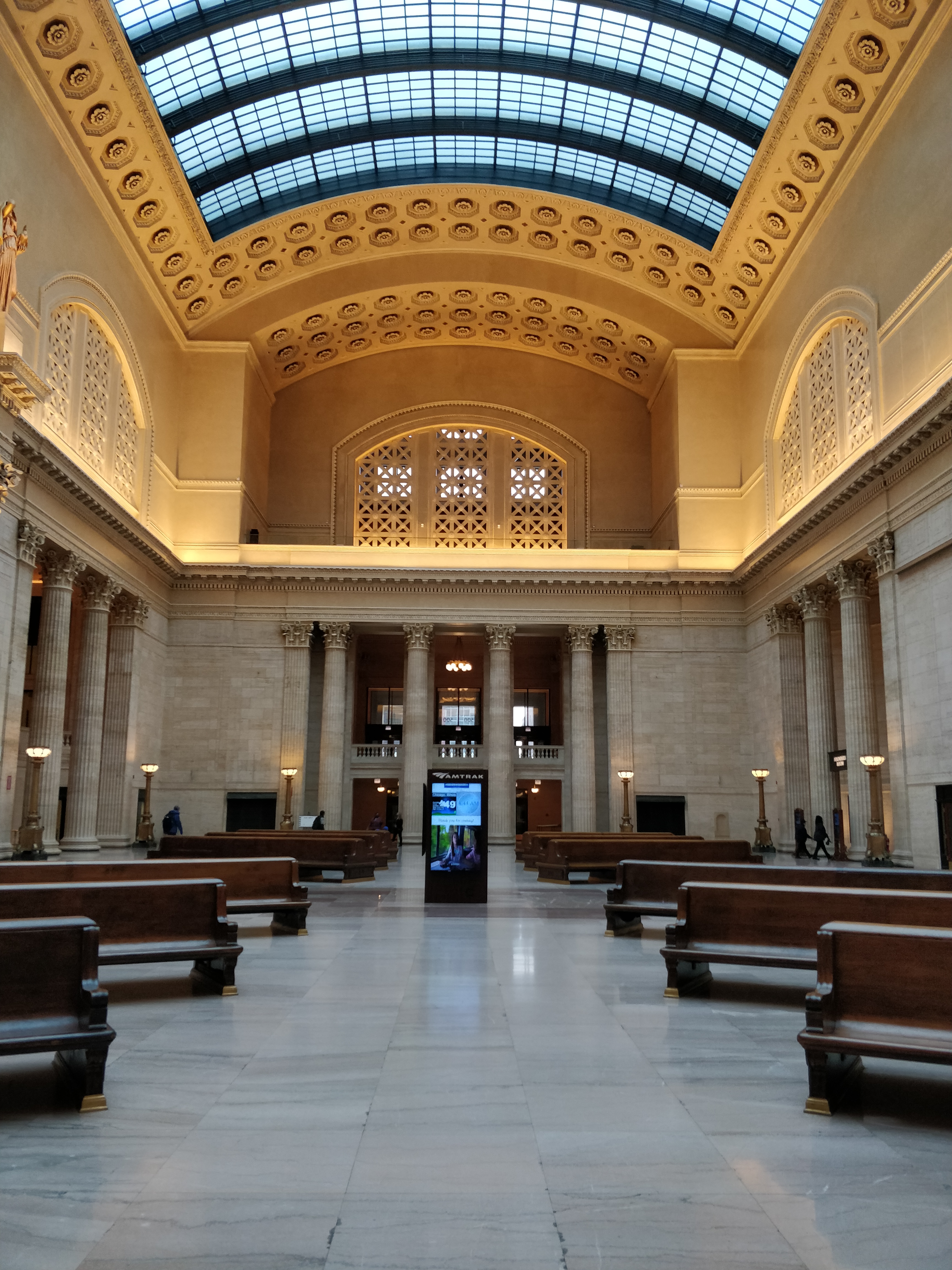
Those that know me are likely familiar with my weakness for sandwiches. A sandwich is a world of possibilities: hot or cold; effectively limitless combinations of toppings and flavours; all domiciled in a homely yet portable roll—what's not to love?
So it doesn't take much for me to love a sub shop, but I fell especially hard for Head West. Excellent veggie options and their unabashed commitment to a nearly fluorescent green-purple-yellow colour scheme—seriously, they'd fit right in next to a Chuck E. Cheese—combine for a hippie aesthetic I can totally get behind. The subs themselves are reasonably priced, so naturally there was money left in the budget for one of their t-shirts…
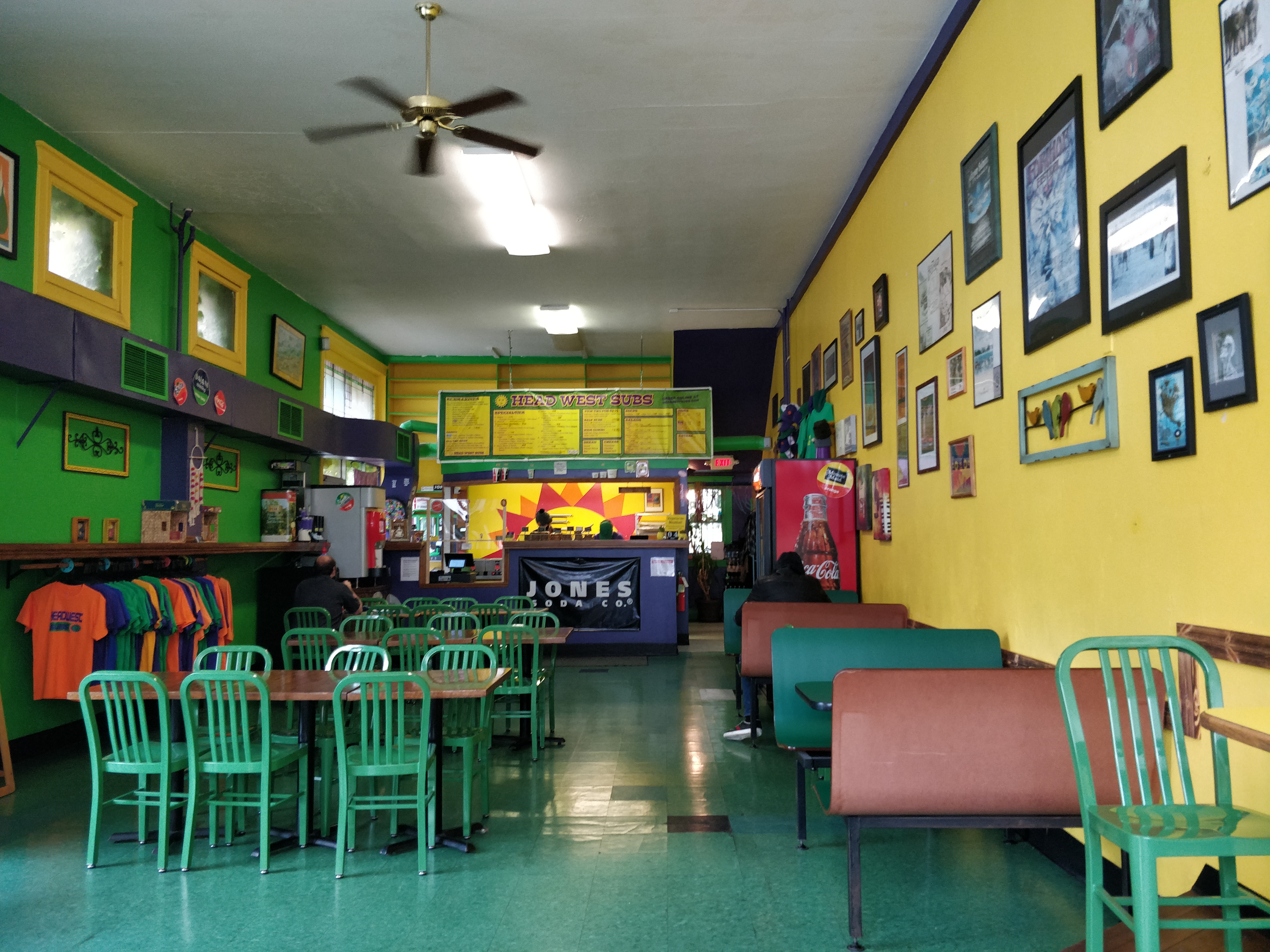
Dana–Thomas House
The main attraction on our first day was a guided tour of the Dana–Thomas House. In 1902, Susan Dana (a wealthy heiress) hired Frank Lloyd Wright to completely remodel and extend her family home—providing him an unlimited budget and nearly full creative control to do so. (It was later purchased by a certain Charles C. Thomas and thereafter sold to the state, hence the "Dana–Thomas" moniker.)
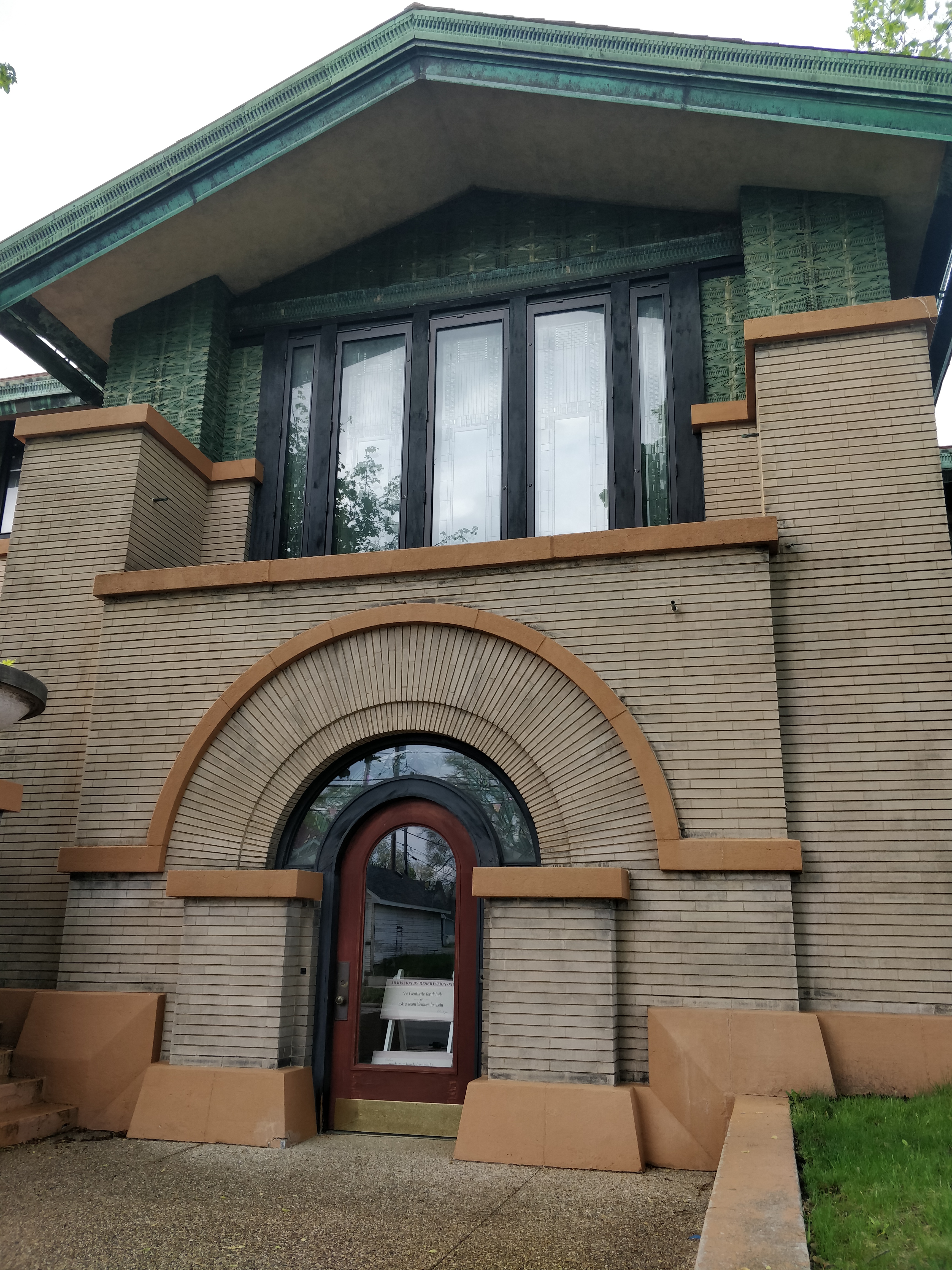
Even as a complete architectural ignoramus, there was something deeply pleasing about touring the house. The singularity of the vision and execution means that you are completely surrounded by precise lines and repeated geometrical motifs; from the window designs, to the furniture, and indeed the architecture of the house itself (all designed by Wright!). Free of the essential clutter of day-to-day life, the house becomes a dedicated art exhibit unto itself; an immersive experience on a wholly unique scale.
The tour also offered insights into Dana's personal life. As an only child, she inherited her parents' vast fortune, but loss followed her at every corner. Most notably, her only two children passed away in their infancy. An unworn Christening gown purchased on a trip to France speaks to the hole this seems to have left in her life. At the risk of practicing armchair psychology, it seems quite natural (and rather tragic) to connect Dana's grief to her house: deprived of the close family relationships she desired, she filled her life hosting elaborate gatherings spanning high-society soirées to book readings for children on Saturday mornings (capped off with ice cream from a hidden library icebox, to boot).
I am immensely grateful that the house has been preserved and is actively being exhibited. It took an unusual set of circumstances for it to have been built, and it would be a shame to lose such a fascinating structure to the vicissitudes of time.
One final fun fact: the house contains a full bowling alley in the basement! While the guide will tell you it was a favourite of Dana's, I'm of the opinion that the long, horizontal lines made it the only recreational installation Wright would tolerate...
(Sources: our tour guide, and the educational resources from the Illinois Historic Preservation Division; in particular their History of the Dana–Thomas House)
Lincoln's Neighbourhood
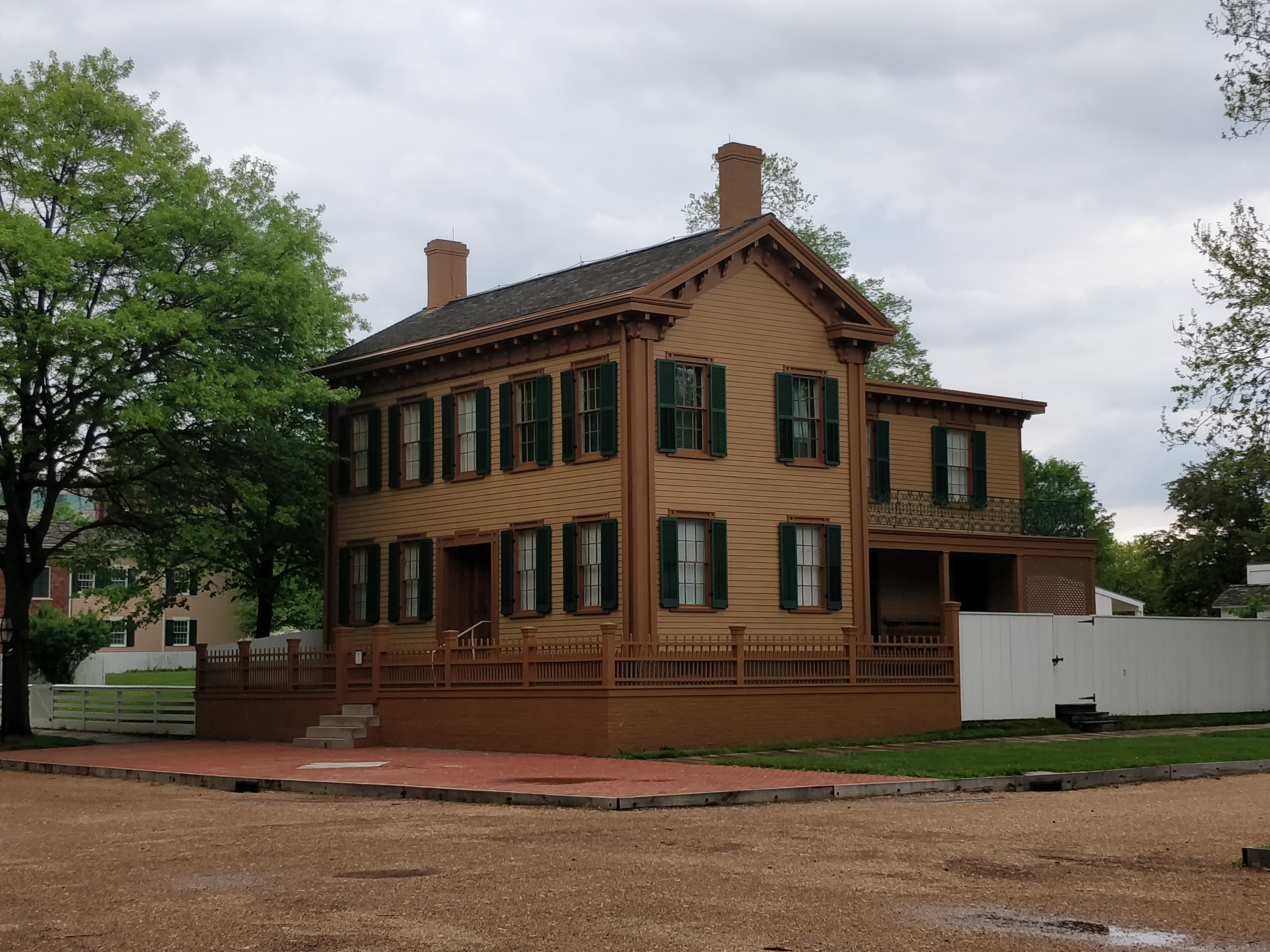
We wrapped up the evening with a jaunt through Lincoln's Neighbourhood, a historical recreation of several blocks of Springfield as it would have appeared in the 1860s. The main draw is of course the former house of Honest Abe himself. It certainly must have been a place of significance for their family: it was the only home they ever owned, three of their children were born there, and it is also where one of those children passed away. It's a neat area in which to stroll around, but to me there isn't a huge draw here unless you're deeply interested in the minutia of Lincoln's former neighbours.
Day 2
Lincoln Presidential Museum
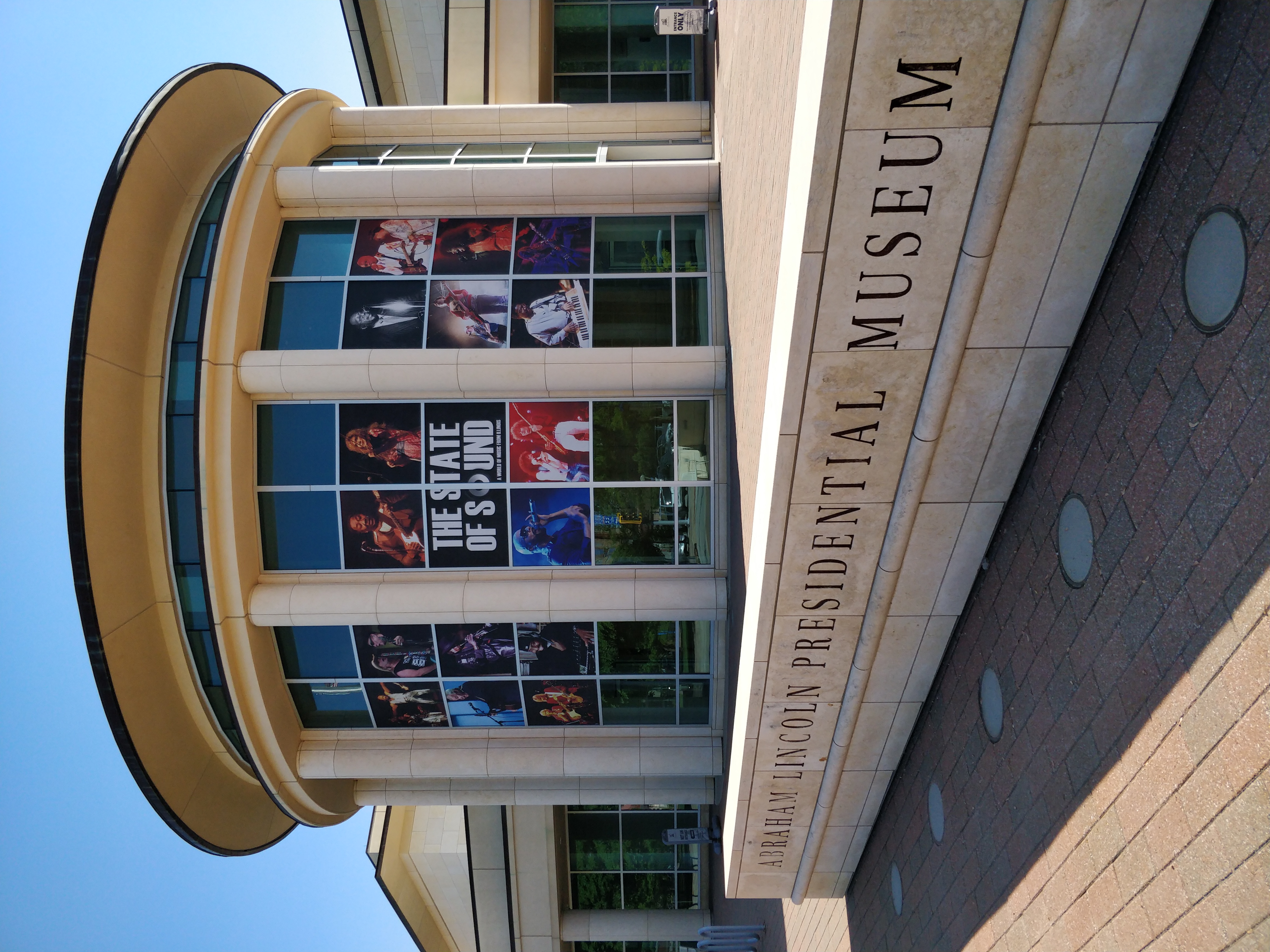
After a cup o' joe & delicious muffin at Custom Cup Coffee, we set off for what is perhaps Springfield's #1 attraction: the Abraham Lincoln Presidential Library and Museum. I had already been briefly once (on the way back from a road trip to St. Louis) and was eager to revisit it with my wife. I was as impressed this time as I was before.
The museum is basically "Abraham Lincoln's Disneyland." The production quality is sky-high; lifelike wax figurines, historical artifacts and multimedia exhibits are used to tell the story of America's sixteenth president. I'm most impressed by the Ghosts of the Library live theatrical presentation, which blends regular stage props with special effects in an incredibly realistic way; I haven't seen anything like this elsewhere. (It's apparently powered by proprietary "Holavision®" technology from BRC Imagination Arts.)
I think the museum's greatest strength is that it emphasizes the emotional story of Lincoln's life over a dry recitation of facts. That's not to say the museum lacks in information, but it recognizes that the best way to convey the enormity of the struggles that Lincoln faced—both as president and as a man—is to put the visitor in his shoes. Physically distorted political cartoons accompanied by whispered jeers remind us that fake news is not an exclusively modern phenomenon. Here, the path to issuing the Emancipation Proclamation is literally surrounded by angry dissidents arguing why it goes too far—or not far enough. It shatters the typical sterilized textbook portrayal of historical documents, and confronts us with the reality: there is no obvious right or wrong. People will vilify you no matter what decision you make. How will you choose?
The presentation of the emotional climax here is masterful. After the grinding stress of the Civil War, finally rays of jubilation begin to break through—Lincoln is re-elected, Union victory seems assured, the Thirteenth Amendment is passed! We've learned of the many tragedies that both the nation and Lincoln himself have suffered to get here, but it all finally seems to have been worth it… and then you spy the entrance to Ford's Theatre at the end of the hall. By the time we arrive at Lincoln's coffin, we can mourn the man personally, so acquainted are we with his sacrifices.
On the subject of the Emancipation Proclamation, Attorney General Edward Bate's views deserve special recognition, which I would describe as "seventeen wrongs (almost) make a right." Quoting from the museum exhibit:
Although against black equality, Bates gave his unreserved support to the Proclamation. He hoped and assumed that once free, all Negroes would leave the United States to colonize Central America.
While some historians disagree, this is widely considered to be the first bruh moment.
State history museum
With some extra time on our hands, we stopped by the Illinois State Museum. (We would have liked to tour the Capitol building proper, but it didn't seem accessible to the public at the time.) In particular, the Fashioning Illinois: 1820–1900 exhibit caught my wife's eye. The intricacies of the evolution of fashion were completely lost on me, of course, but the exhibit was a stark reminder of how dramatically Western quality of life has increased since that time. A couple examples in particular stood out. The first: an old folk song that jokingly describes how irascible wives are on "blue Monday," the weekly washing day. This should perhaps not be altogether surprising, given that the process consisted of tedious physical labour and harsh cleaning agents. The second item that caught my eye was a pair of hand-me-down undergarments; after the original wearer passed away, her sister-in-law inherited them, and updated the name in the waistband to match. At the risk of veering into economic debate, both examples make me better appreciate the technological innovations that have eliminated those toils from my life (though of course, there is a separate discussion to be had as to whether that toil has truly been eliminated, or merely transferred across the world, conveniently beyond our notice).

Lincoln's tomb
The next stop on our Lincoln tour was the family's final resting place, The Lincoln Tomb, located a few kilometres north of the downtown area. Once again, my kudos to the Illinois Historic Preservation Divison: it was seamless to join the next tour after we arrived, and the guides were friendly and knowledgable. The exterior features an obelisk (funny how persistent that Egyptian influence seems to be), the requisite statue of the man himself, and four other statues representing the branches of military service at the time (infantry, artillery, cavalry, and navy); those are built partially from melted down canons from the war. The interior is a polished marble passageway that commemorates the different periods of Lincoln's life with statues and snippets of speeches, with the family's monument halfway through.
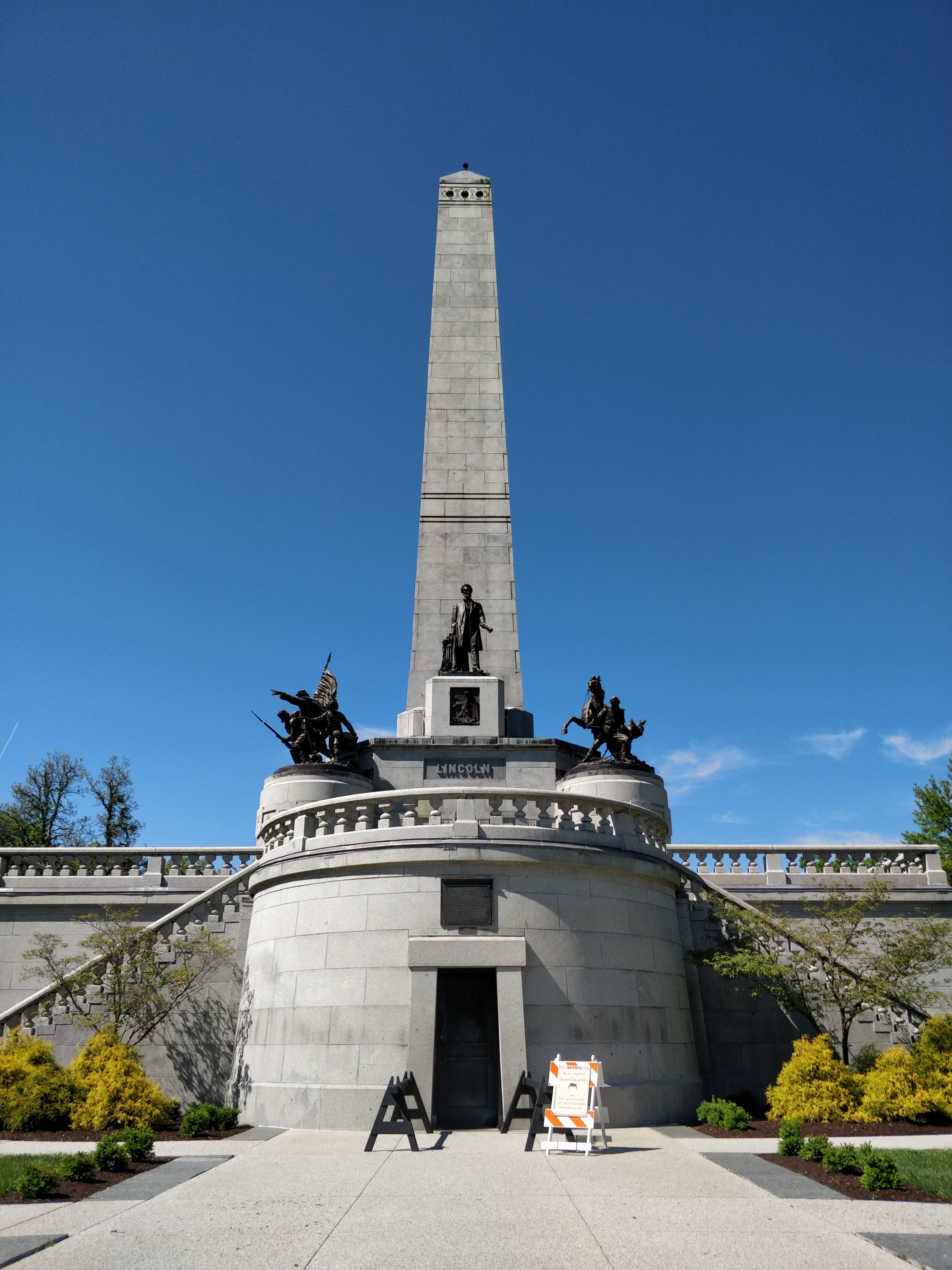
I wish I could say our time by the tombstone was a moment of silent, somber reflection. Instead, we felt vaguely rushed and annoyed as the panting pack of Galaxy-S20-wielding boomers behind us inched ever closer. Yes, I'm being uncharitable, but having to run mental COVID calculus yet again is a surefire way to ruin any moment.
Since I have no profound insights to offer from President Lincoln's final resting place, allow me to instead share the story of a Mr. Roy Bertelli. Oak Ridge Cemetery is what you might expect—rolling green hills, birds singing quietly, and rows upon rows of stately, marble tombstones proclaiming the dead. Like many, you may have come here to pay your respects to Lincoln, but before you spot the obelisk adorning his tomb, you'll be accosted by an even more powerful presence: MR. ACCORDION. MR. ACCORDION offers only questions, no answers—who was Roy Bertelli? Why did he like the accordion so much? How in the world did he get his massive monument erected on what is ostensibly the footpath to Lincoln's tomb? We found a full account of the late MR. ACCORDION on roadsideamerica.com. I won't ruin the ending, but it's a hilarious "stick-it-to-the-man" story.
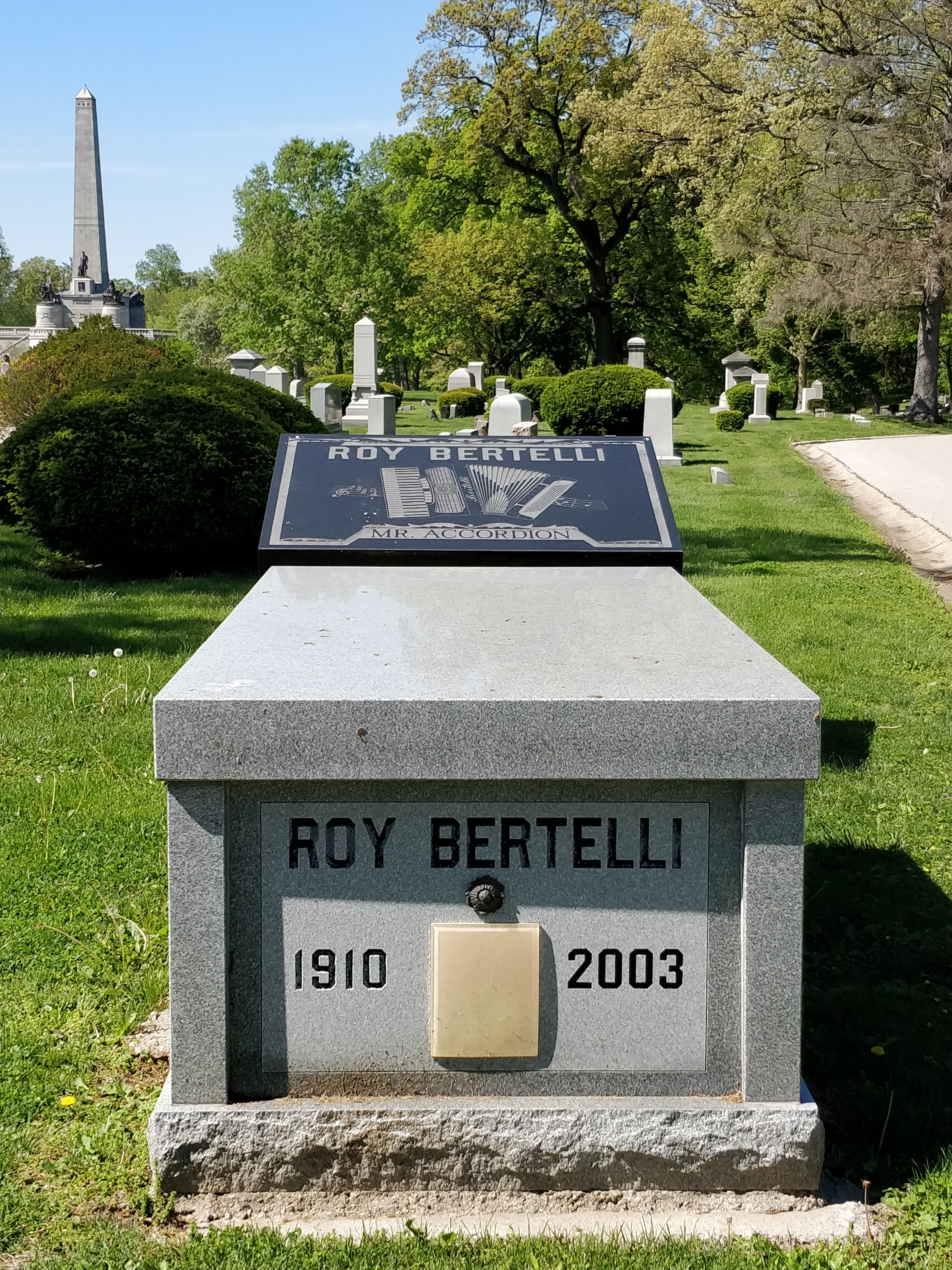
Final tour of downtown
Once again in the downtown core, we found ourselves with time for a few final stops before grabbing dinner and calling it a day. We stumbled upon Prairie Archives, one of those lovely bookstores where every available surface is stacked with books. We had an indirect connection to the pastor of First Presbyterian Church and just happened to catch her by chance as we walked by. Reverend Phillips graciously let us explore the church itself, which features absolutely stunning stained glass windows (including one of the few existing signed Tiffany pieces), as well as the Lincoln family's former pew. It was truly an unexpected delight to be able to take in. Thanks, Susan!
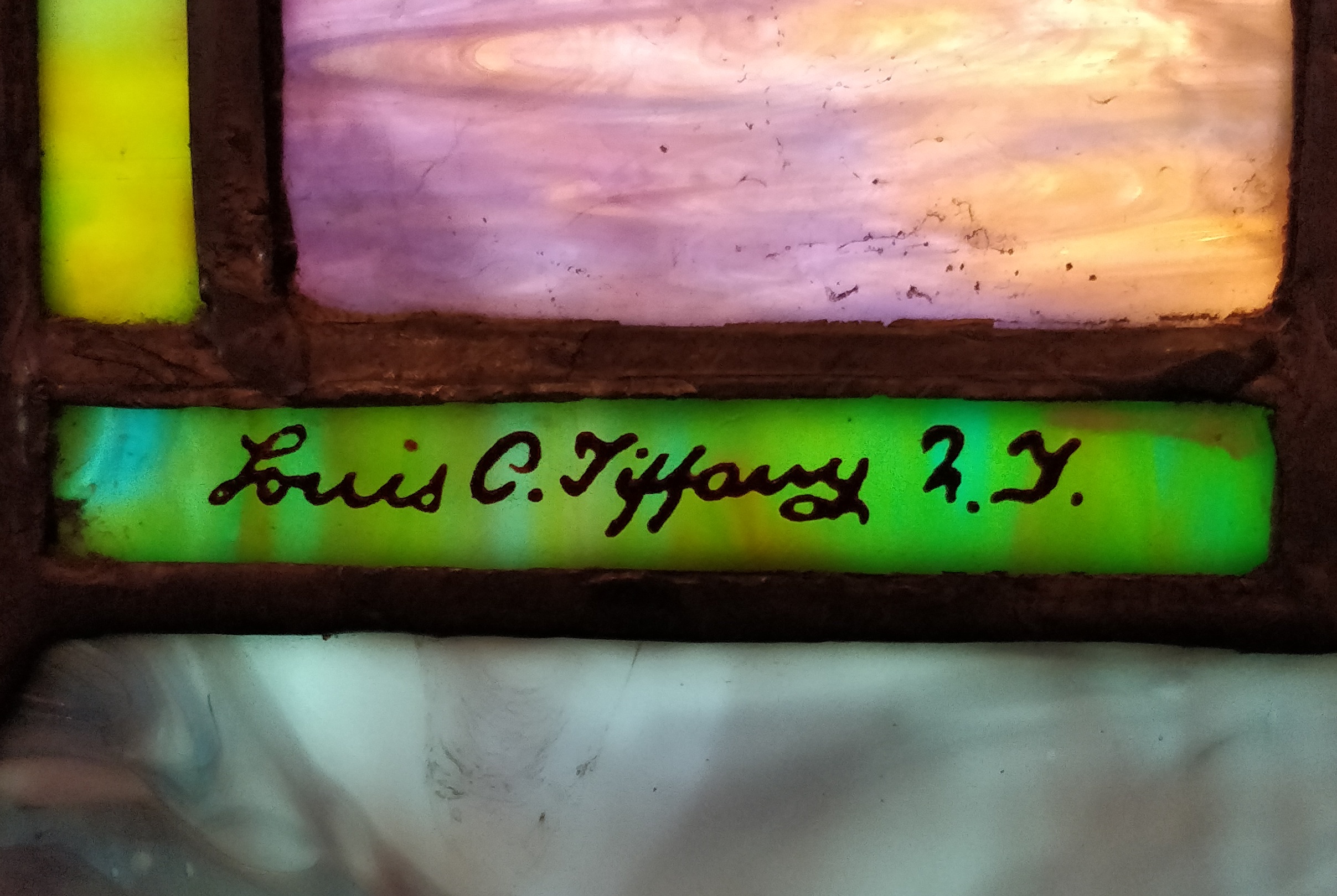
Whew—after a long day of exploring, there was one last piece of unique Springfield culture to experience: the famous horseshoe sandwich. A horseshoe sandwich is a slice of Texas toast topped with your choice of meat (a veggie burger in my case), drowned in cheese sauce, and then buried in French fries. We stopped by Obed & Isaac's for ours. Heed my warning, dear reader: apparently ordering a regular horseshoe means you get two of these concoctions, which is several meals' worth of food. You'll probably want to opt for a "ponyshoe" instead, which is just a smaller serving. My overall verdict? Pretty good! It's exactly what you'd expect, but if you're just looking for a different arrangement of "cheeseburger + fries," this is a fun one. Also noteworthy: Obed & Isaac's had some tasty brews. Chief among them was the watermelon sour, which is a genius flavouring for an underappreciated style. (Yes, it's basically just a watermelon Jolly Rancher in beer form.)
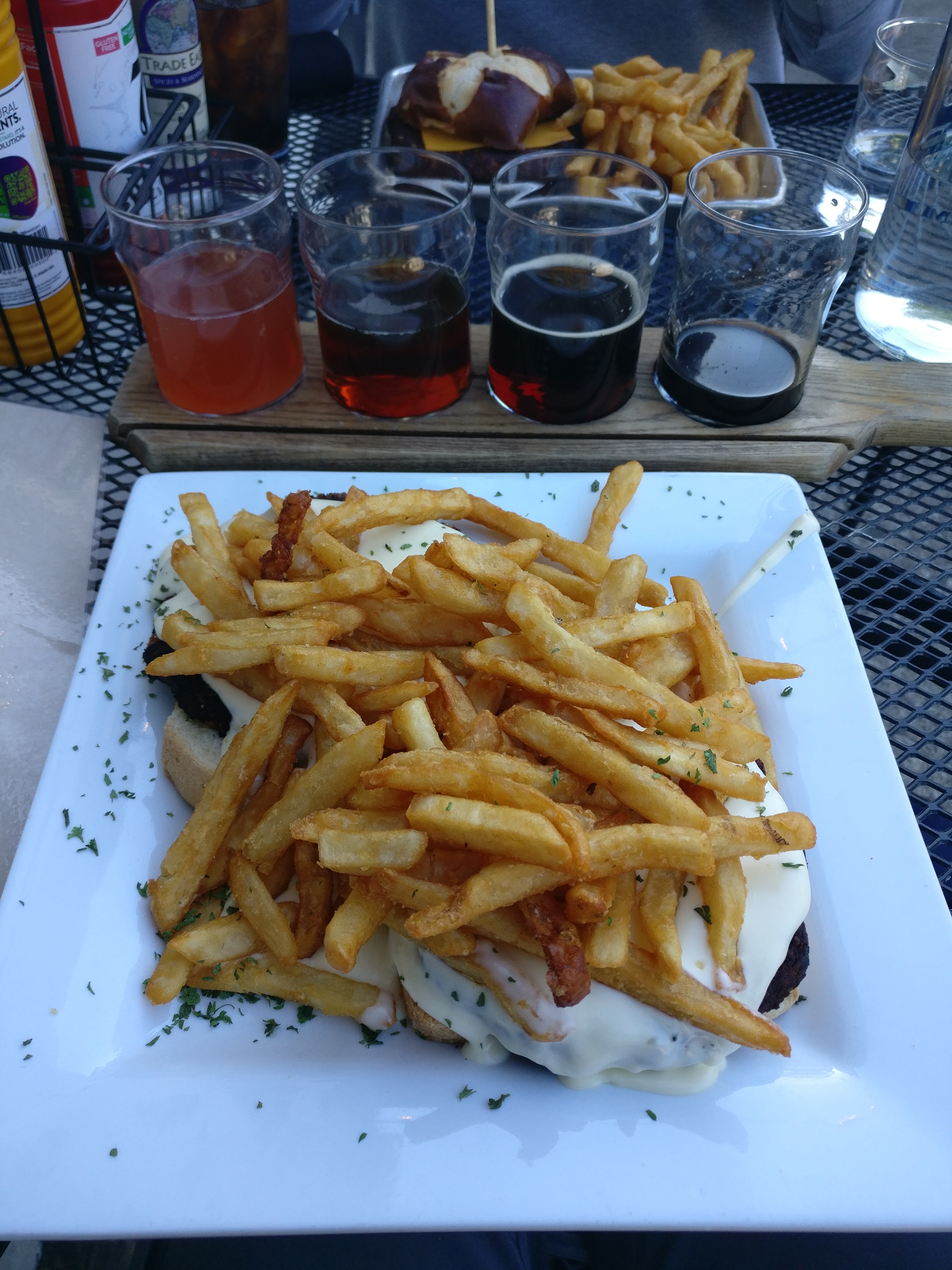
Conclusion
All in all, we had a wonderful time in Springfield. While we won't be returning perennially, it really did feel like a great place to take in some very interesting Midwestern culture. The walkability of the downtown core and its proximity to the train station make it easy to recommend as a quick Chicago getaway for the historically inclined.